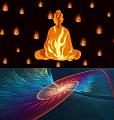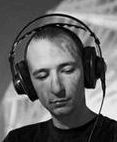| Author
|
Low Frequency Oscillator (LFO)
|
dharmatronic
IsraTrance Junior Member

Started Topics :
21
Posts :
130
Posted : Sep 14, 2009 16:13:35
|
Hi,
I thought that could be interesting to share the LFO concept in a direct and clear way as it figures here:
A Low Frequency Oscillator, or LFO for short, is a technique used in sound synthesis and sampling to create many different types of effect.
As the name suggests an LFO operates at low frequencies, anywhere from 0.01Hz up to around 200Hz, and unlike conventional oscillators is not intended to be a sound source per se, but rather a way of modulating other parameters.
For instance, if a tremolo (rhythmic changing of volume) effect was required, a LFO could modulate the amplifier section of a synth/sampler and the volume would change at a rate determined by the frequency of the LFO - for instance, a LFO rate of 10Hz would see the volume change at a rate of 10 times per second.
An LFO can be routed to many different parts of a synth or sampler to create many different effects. A rhythmic wah effect could be created by sending the LFO output to a filters cutoff control. On modern digital and software based synths and samplers, the routing possibilities are almost endless and virtual instruments such as z3ta+ by RGC:Audio push the boundaries of synthesis with their modulation matrixes.
Another common use of LFO is to modulate the pitch (creating vibrato) of an oscillator, but have the LFO rate dictated by a controller such as the modulation wheel - this allows keyboard players to inject some of the feel of an instrument such as a guitar into their playing.
The waveform of an LFO is often selectable from standard waveforms such as a sine, saw, triangle and square.
credit: This content is brought to you by Audiocourses dot com
|

|
|
jizy
IsraTrance Full Member

Started Topics :
90
Posts :
1493
Posted : Sep 14, 2009 22:59
|
|
sorry i dont get it...
|

|
|
Ascension
IsraTrance Full Member

Started Topics :
170
Posts :
3642
Posted : Sep 14, 2009 23:20
|
|
Koozer Mox
Koozer Mox

Started Topics :
52
Posts :
713
Posted : Sep 15, 2009 01:45
|
|
sp0ok
IsraTrance Junior Member

Started Topics :
22
Posts :
114
Posted : Sep 15, 2009 06:59
|
IS it possible (in any vst) to connect one LFO to the other ?
        "Do not try and bend the spoon. That's impossible. Instead, only try to realize the truth." "Do not try and bend the spoon. That's impossible. Instead, only try to realize the truth."
Neo: "What truth?"
Spoon Boy: "There is no spoon." |

|
|
Upavas
Upavas

Started Topics :
150
Posts :
3315
Posted : Sep 15, 2009 07:37
|
|
dharmatronic
IsraTrance Junior Member

Started Topics :
21
Posts :
130
Posted : Sep 15, 2009 09:47
|
Sorry I assume that is not everyone who knows it. For instance, if you are pretty sure about how it works you could add some practical information or a modulation application effect... instead of "cool but pointless". anyway...
be good
=) |

|
|
Medea
Aedem/Medea

Started Topics :
127
Posts :
1132
Posted : Sep 15, 2009 10:38
|
If you have a fast playing lead, a nice trick can be routing LFO to ADSR parameters, especially attack and release.
        http://soundcloud.com/aedem http://soundcloud.com/aedem |

|
|
sp0ok
IsraTrance Junior Member

Started Topics :
22
Posts :
114
Posted : Sep 15, 2009 15:48
|
Quote:
|
On 2009-09-15 07:37, Upavas wrote:
It most definitely is... even though I don't really see much of a point in it...
|
|
why not ?
lets say i routed an LFO1 to the frequency of a band pass filter, this would give me a uniform sweep oscillating sweep of the sound. now,wouldn't routing an LFO2 to the speed of LFO1 give me an ascending & descending sweep of the sound ?
        "Do not try and bend the spoon. That's impossible. Instead, only try to realize the truth." "Do not try and bend the spoon. That's impossible. Instead, only try to realize the truth."
Neo: "What truth?"
Spoon Boy: "There is no spoon." |

|
|
Upavas
Upavas

Started Topics :
150
Posts :
3315
Posted : Sep 16, 2009 05:46
|
routing lfo 2 to the speed of lfo 1 means, the speed of lfo 1 is the same a lfo 2, you might as well do that speed with lfo 1.
True, if you only rout a part of that signal to lfo 1 you would get some kind of sweep if both speeds are not the same, something that can be done very simply by automating the speed of lfo 1 , you wouldn't need lfo2 in this scenario to achieve the same effect, however, whatever works best for you, go for it mate !
        Upavas - Here And Now (Sangoma Rec.) new EP out Oct.29th, get it here: Upavas - Here And Now (Sangoma Rec.) new EP out Oct.29th, get it here:
http://timecode.bandcamp.com
http://upavas.com
http://soundcloud.com/upavas-1/ |

|
|